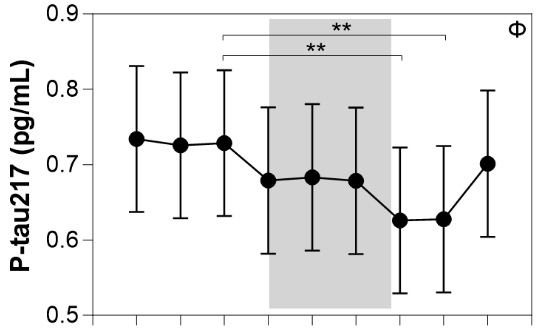“P-tau217 and other blood biomarkers of dementia: variation with time of day.”
Ciro della Monica, et al. – University of Surrey.

Background: Diurnal variation in biomarkers has major implications for their utility, but has not been fully explored for biomarkers of dementia.
This Study: della Monica and colleagues measured several AD-linked biomarkers, such as phospho-tau 217 (p-Tau217) and amyloid-β 42 (Aβ42), in patients with prodromal/mild AD and cognitively unimpaired adults.
- Measurements were collected every 3 hours over a 27-hour period in the clinic, including normal meals and sleep/wake cycles.
- Significant variation across the day was observed for all biomarkers, save for GFAP.
- Different biomarkers varied in distinct patterns across the day, suggesting that this circadian variation is unlikely to be due to a single underlying factor.
- The increase in p-Tau217 levels from the lowest point of the day to the highest (15.8%) was comparable to the change over the course of an entire year observed by another study in patients with prodromal AD (14.7%). This suggests that time-based variation could be a significant confounder, both in studies and in the clinic.
Bottom Line: The time at which plasma biomarker samples are collected should be standardized as much as possible to control for variation based on time of day.
Open Question: Could measuring p-Tau217 (or other phospho-tau species) as a fraction of total Tau reduce or eliminate this variation? While likely not the only source of variation, the rate at which the kidneys filter out Tau is controlled for by p-Tau/Tau metrics.




